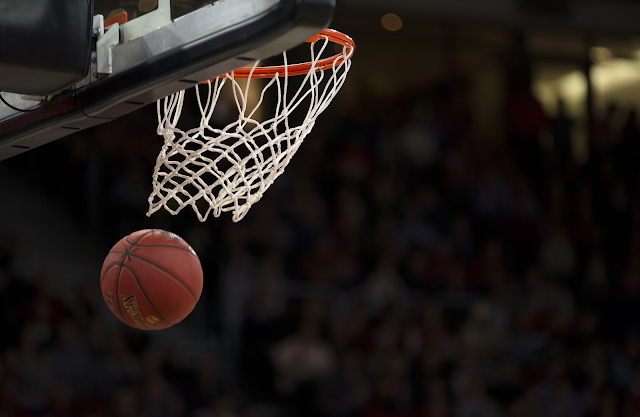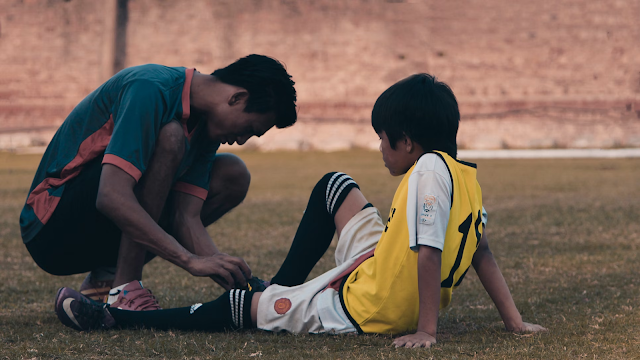Exploring Plantar Fasciitis and Its Impact on Basketball Performance
Basketball is a dynamic and extremely physically demanding sport at the elite level. Basketball, like all sports, requires speed, agility, and precise footwork. Players constantly pivot, jump, and run, putting immense pressure on their feet. Plantar fasciitis is a common ailment that can strike basketball players, amateur or professional alike, especially the large athletes that are also common in basketball. Plantar fasciitis is a painful condition that affects the plantar fascia, a thick band of tissue that runs along the bottom of the foot. Players like Damian Lillard, Pau Gasol, Jason Kidd, Derrick Favors, Steve Francis, and Kristaps Porzingis have all suffered from this condition.This injury can be scary and has sidelined players for a while, due to its chronic and worsening nature. NBA Great Pau Gasol missed more than 6 weeks due to a strain in the plantar fascia. In this blog post, we will explore what plantar fasciitis is, its causes, and symptoms, and how it can significantly impact a basketball player's performance and overall well-being.
Understanding Plantar Fasciitis
Plantar fasciitis is the inflammation of the plantar fascia, a pretty tough ligament-like structure that stretches from the heel to the ball of the foot. Its primary function is to support the arch of the foot, absorb shock, and assist in propelling the body forward during walking or running. When this tissue becomes strained or damaged, it can result in pain and discomfort in the heel and arch of the foot.
Causes of Plantar Fasciitis
- Overuse and Repetitive Stress: Basketball involves a great deal of running, jumping, and sudden stops, which places excessive stress on the plantar fascia. Over time, this can lead to microtears in the fascia, causing inflammation and pain.
- Improper Footwear: Wearing shoes with inadequate arch support, cushioning, or those that don't fit properly can contribute to plantar fasciitis. Basketball shoes that lack proper support can exacerbate the condition.
- Biomechanical Factors: Individual foot structure and mechanics can play a significant role. People with high arches or flat feet may be more prone to plantar fasciitis due to the altered distribution of weight and stress on the plantar fascia.
- Sudden Increases in Activity: A sudden increase in the intensity or duration of basketball training or games can strain the plantar fascia. This often happens during preseason training or when returning from a break.
Symptoms of Plantar Fasciitis
- Heel Pain: The hallmark symptom of plantar fasciitis is sharp or stabbing pain in the heel, especially upon waking or after periods of rest. This pain can gradually lessen during activity but worsen with continued stress on the foot.
- Arch Pain: Many individuals with plantar fasciitis also experience pain along the arch of the foot, which can radiate toward the toes.
- Stiffness: The foot may feel stiff, particularly in the morning or after sitting for extended periods.
- Tenderness: The area where the plantar fascia connects to the heel bone (calcaneus) can become tender to the touch.
The Impact of Plantar Fasciitis on Basketball
- Decreased Performance: For basketball players, the pain associated with plantar fasciitis can significantly hinder their performance. Running, jumping, and sudden changes in direction become painful and challenging.
- Reduced Mobility: Plantar fasciitis can limit a player's ability to move freely on the court. This decreased mobility can be a severe disadvantage in a sport that requires constant movement and agility.
- Risk of Compensation Injuries: To alleviate the pain, players with plantar fasciitis may alter their gait and biomechanics, which can increase the risk of other injuries. Knee, hip, and back problems can develop due to these compensatory movements.
- Psychological Impact: Dealing with persistent pain and a reduced ability to contribute to the team's success can lead to frustration, anxiety, and even depression for affected players.
Managing Plantar Fasciitis in Basketball
- Rest and Ice: Rest is crucial for healing. Applying ice to the affected area can help reduce inflammation and alleviate pain.
- Stretching and Strengthening Exercises: Specific stretching exercises can help improve the flexibility of the calf muscles and the plantar fascia. Strengthening exercises can also help provide better support to the arch of the foot.
- Orthotics and Proper Footwear: Custom orthotics or well-designed basketball shoes with proper arch support and cushioning can help alleviate symptoms and prevent further damage.
- Physical Therapy: A physical therapist can provide guidance on exercises and techniques to relieve pain and improve foot function.
- Anti-Inflammatory Medications: In some cases, non-steroidal anti-inflammatory drugs (NSAIDs) may be recommended to reduce pain and inflammation.
- Night Splints: Wearing night splints can help keep the plantar fascia stretched while sleeping, reducing morning pain.
- Corticosteroid Injections: In severe cases, a physician may recommend corticosteroid injections to reduce inflammation and pain.
- Extracorporeal Shock Wave Therapy (ESWT): ESWT is a non-invasive procedure that uses shock waves to stimulate healing in the affected tissue.
- Release Surgery: Plantar fasciitis release surgery, also known as plantar fasciotomy or heel spur surgery, is a medical procedure used to treat severe cases of plantar fasciitis that do not respond to conservative treatments.
Conclusion
Plantar fasciitis is a painful and potentially debilitating condition that can significantly affect basketball players. To excel in this sport, players must prioritize foot health and take steps to prevent and manage plantar fasciitis. Timely intervention, proper footwear, and a combination of stretching, strengthening, and rest can help players get back on the court pain-free and at the top of their game. Remember, while basketball is a high-impact sport, with the right care and attention, plantar fasciitis doesn't have to be a slam dunk blocker.
Photo by Markus Spiske on Unsplash
Photo by Nick Gio on Unsplash
Photo by Yogendra Singh on Unsplash
Photo by Todd Greene on Unsplash








Comments
Post a Comment